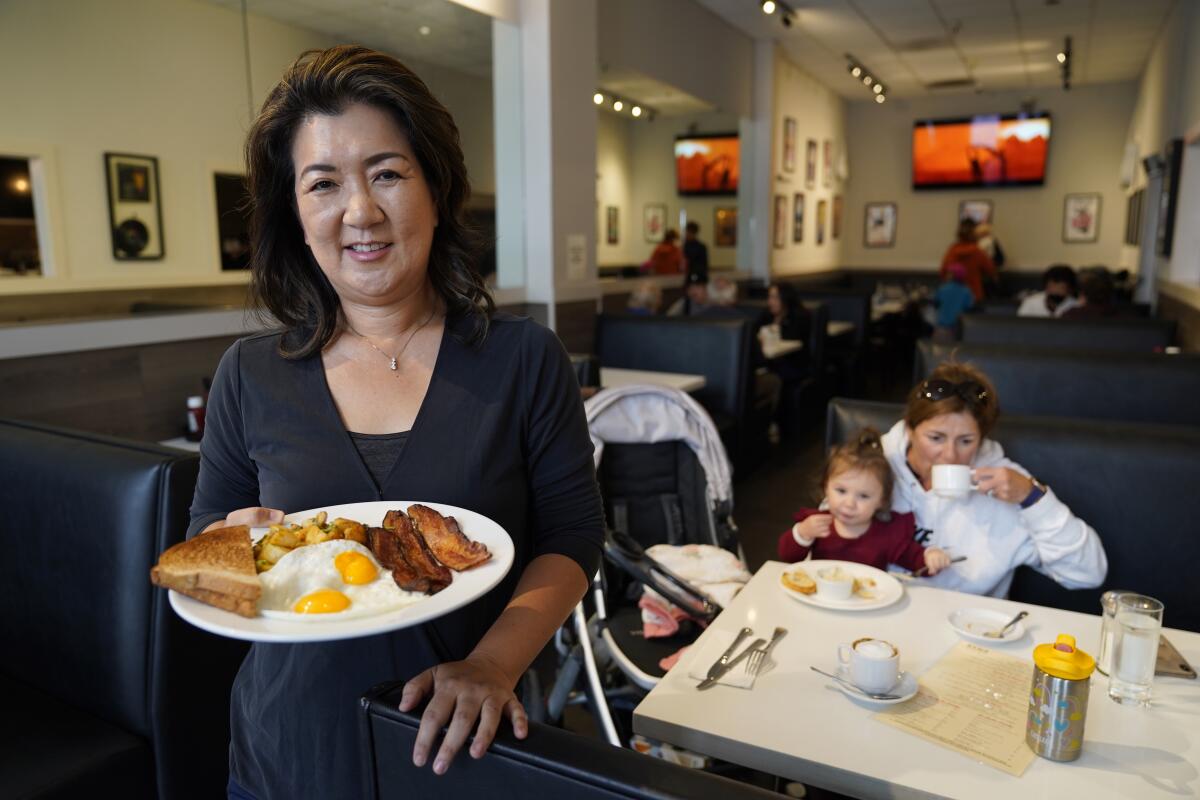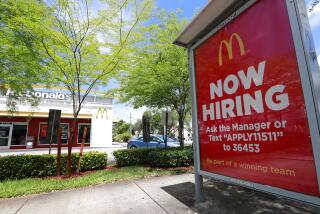Column: Why bacon is off the menu

- Share via
OK, people. We need to talk.
When the pandemic began and a lot of y’all started panic-buying, I was irritated. However, the family figured out a way to work around the lack of hand sanitizer and Lysol. Now, the shortage of toilet paper was a bit trickier, but we would routinely run out to scavenge, like Richonne from “The Walking Dead.”
“Did you find any?” I would text my husband.
“Yeah, I found two packs of one-ply at Safeway,” he’d respond.
“One-ply? My God, these are indeed the end of days.”
But now … now we have a real supply-chain issue that I fear may send much of American society into complete chaos: We’re running low on bacon. And because of that scarcity, during the last 12 months, the cost for a slab has increased by nearly 28% since this time a year ago. Even factoring in inflation, the cost of bacon is the highest it has been in 40 years, according to a CNN report. Industry experts do not expect that to come down anytime soon.
Truth be told, the cost of bacon was already skyrocketing. In President Obama’s first year in office, a pound cost $3.57. In President Trump’s last year, it was $5.83. That’s an average increase of 75 cents a term.
Vegans and vegetarians who are accustomed to tie-dyed soy strips masquerading as meat may not have noticed.
Those who don’t eat pork for religious reasons have God on their side.
But for those of us who enjoy bacon-wrapped doughnuts, the crippling of the domestic pork supply chain is a real issue. Don’t try to tell us turkey bacon is just as good. That’s akin to telling a coffee drinker that the smell of green tea steeping in the kitchen can wake you in the morning as well.
Of course Californians were already bracing for a significant bacon price increase, because of the 2018 passage of Proposition 12. Effective in 2022, that law requires breeding pigs and their piglets to be raised in a space of at least 24 square feet per pig. As of July, only 4% of pork suppliers met that standard. If the state lost half its pork supply, bacon could see a 60% price spike starting in January.
But what’s driving up prices now? It starts with those aforementioned panic buyers, who bought up all of the hand sanitizer, four-ply tissue and apparently bacon, among other poultry and meat items.
Also, because the pandemic forced facility closures, millions of pigs were euthanized.
And who can forget about America’s favorite bogeyman, corporate greed? When I was in preschool, the four largest hog-processing companies controlled 33% of the market. By 2018, they controlled 70%. That’s because since the mid-1990s, 70% of the country’s hog farms were shuttered, enabling just a handful of conglomerates to dictate costs. And that always works out well for consumers, right?
In January, Tyson Foods Inc. said it would pay $221.5 million to settle claims that it inflated chicken prices. In February, Pilgrim’s Pride Corp. pleaded guilty to its role in a conspiracy to fix chicken prices and rig bids, incurring a $107-million fine.
And we all know bacon is way more important than chicken. After all, the phrase isn’t “bring home the chicken.”
Last month the Biden administration announced plans to address the rising cost of bacon (and the lesser meats), stating it is taking “strong actions to crack down on illegal price fixing, enforce antitrust laws, and bring more transparency to the meat-processing industry.”
In the meantime, real decisions are being made in homes and restaurants everywhere. Are you willing to pay extra for a piece of bacon in your Bloody Mary, the way you pay extra for guacamole? Will America’s diners offer more L and T and less B going forward? Does that doughnut really need to be wrapped?
Some consumers may not feel the price difference in their pocketbooks. But for a lot of families, that strip of bacon that used to represent a cheap, simple pleasure is sadly morphing into a luxury that’s harder to afford.
More to Read
A cure for the common opinion
Get thought-provoking perspectives with our weekly newsletter.
You may occasionally receive promotional content from the Los Angeles Times.










